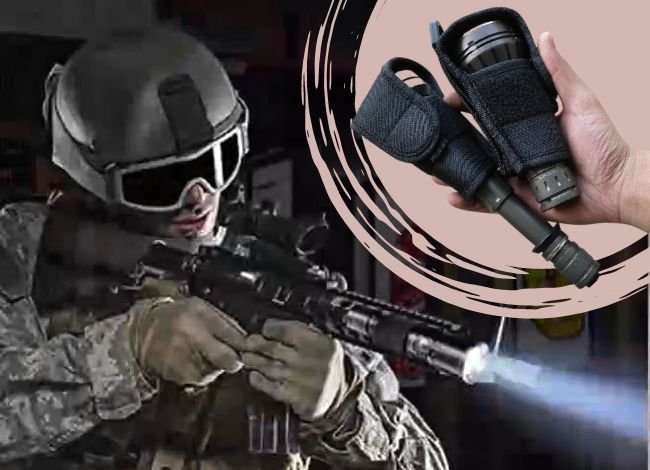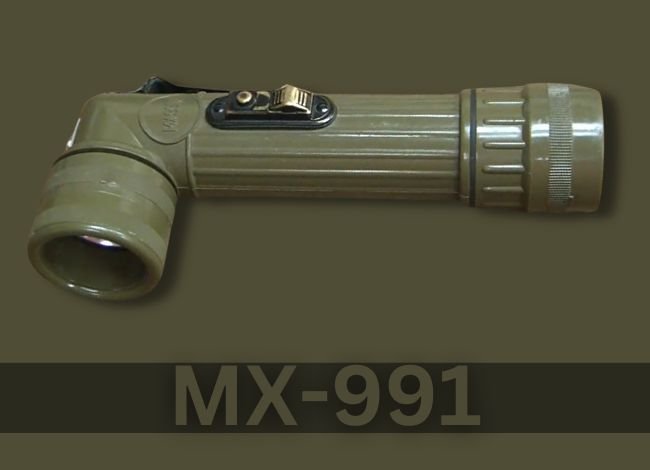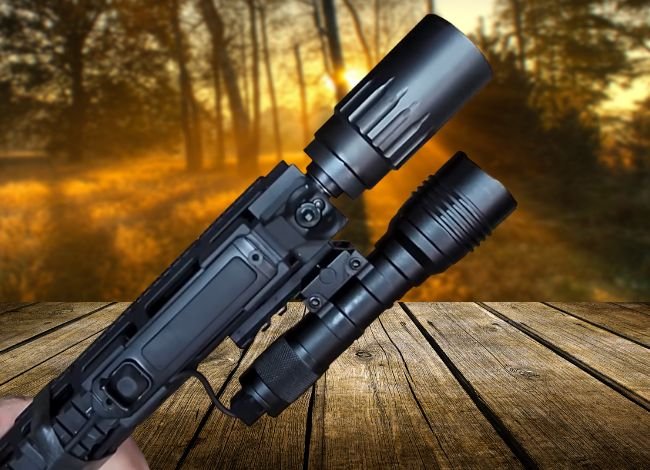Last Updated on September 10, 2025
A police flashlight is an essential piece of tactical gear, and understanding its lumen rating is crucial for assessing its performance. A lumen measures brightness—specifically, the total amount of visible light emitted by a source. In general terms, 1000 lumens is equivalent to the brightness of a 100-watt incandescent bulb. Police officers face unpredictable and demanding environments, so their tactical flashlights must be powerful, durable, and versatile. In this article, we will explore how many lumens are in a police flashlight, why lumen count matters, and what additional features are critical for law enforcement use.
How Many Lumens Are There in a Police Flashlight?
Most police flashlights start at a minimum of 1000 lumens, which is considered the baseline requirement for effective tactical use. These flashlights need to be significantly brighter than consumer-grade lights, as officers often operate in low-visibility situations and require illumination that extends across long distances.
Depending on the officer’s role or mission, flashlights can range from 1000 to 5000 lumens. High-ranking officers or those on special task forces may use even brighter models. However, if portability is a priority, a smaller rechargeable flashlight with around 400 lumens may suffice for basic inspection tasks.
Which Type of Flashlight is Suitable for Police?
Among the most recommended brands, Streamlight stands out for offering highly durable, powerful, and rechargeable flashlights. The Streamlight Stinger series, in particular, provides outstanding functionality with features like extended battery life, multiple lighting modes, and rugged construction. These attributes make them ideal for everyday law enforcement duties.
Why Do Police Officers Use Different Flashlights Than the General Public?
Police officers require flashlights that go beyond basic illumination. Unlike average consumers who need light for occasional use, officers depend on their flashlights during high-risk operations, nighttime patrols, search-and-rescue missions, and tactical encounters.
A flashlight for police use must offer extreme brightness, long runtime, quick activation, and compatibility with other gear (such as firearms). The need for reliability under stress and harsh environments justifies the use of higher-lumen, professionally designed flashlights.
Key Features of a Police Flashlight
- One-Handed Operation
Law enforcement professionals often use one hand for holding a weapon or communication device. Therefore, police flashlights typically include tail switches or side buttons for easy one-handed activation. - Weather Resistance
Tactical flashlights must be resistant to water, rain, and humidity. This ensures uninterrupted performance during storms or in wet environments. - Extended Battery Life
Long-lasting, rechargeable batteries are a must. Officers frequently spend hours outside without access to charging, so reliable battery life is essential. - Shock and Impact Resistance
Police flashlights endure harsh drops and usage in chaotic situations. High-grade materials and construction provide durability against impact. - Multiple Modes
Flashlights often include high, medium, low, strobe, and SOS modes, giving officers versatility in different operational settings.
How Many Lumens Are There in a Military Flashlight?
Military flashlights are generally more powerful than police flashlights. They start at 1000 lumens and can reach up to 3000 or more, depending on the mission requirements. The elevated brightness allows military personnel to maintain situational awareness in extremely dark or hostile conditions.
These flashlights are often helmet-mounted or weapon-compatible, allowing hands-free operation during combat or search missions. Their design emphasizes durability, waterproofing, and tactical adaptability.
What Type of Flashlight Does the Military Use?
The MX-991/U flashlight, manufactured by Fulton Industries, is widely used by the United States military. It features a right-angle design, high-impact plastic construction, and infrared capabilities for night-vision compatibility.
Military-grade flashlights must include tail switches for one-handed use and should be compact enough to integrate with tactical gear. Red or green lens covers are sometimes included to preserve night vision or provide signal lighting.
What is a Weapon-Mounted Light?
Weapon-mounted flashlights are essential for both military and law enforcement professionals. These tactical lights attach directly to firearms and provide immediate visibility in dark environments, allowing users to clearly identify threats before engaging.
Such lights usually feature:
- High-lumen outputs (1000+)
- Easy-to-access switches or pressure pads
- Compact, durable builds
- Compatibility with rail systems on pistols or rifles
Because of their association with firearms, weapon-mounted flashlights are primarily used in military and professional law enforcement settings.
How Many Lumens Should a Tactical Flashlight Have?
A tactical flashlight should have at least 120 lumens to be considered effective. This is the baseline for self-defense and general use. For professional-grade tactical applications, flashlights typically offer 500 to 2000 lumens or more.
Flashlights used for patrol or field operations often fall in the 1000–3000 lumen range to ensure adequate brightness across large areas or during emergency conditions.
Frequently Asked Questions (FAQs)
1. How bright should a police flashlight be?
A police flashlight should be at least 1000 lumens to ensure optimal visibility and performance during tactical operations. Some flashlights used in special units may offer 3000+ lumens.
2. How many lumens should an emergency flashlight have?
Emergency flashlights for search and rescue tasks should have between 3000 and 20,000 lumens. These are high-performance lights designed for extreme visibility in disaster zones or during night operations.
3. Can civilians use high-lumen tactical flashlights?
Yes, civilians can purchase and use high-lumen flashlights. However, these lights should be used responsibly, especially in public spaces, to avoid accidental blinding or misuse.
4. Are rechargeable flashlights better for police?
Rechargeable flashlights are preferred due to their convenience, cost-efficiency, and long-term usability. They reduce the dependency on disposable batteries and ensure readiness during long shifts.
5. What flashlight features should rookie officers prioritize?
New officers should look for durability, water resistance, minimum 1000 lumens, tail switch operation, and a rechargeable battery. Starting with a reliable mid-range flashlight (around 1500 lumens) offers a good balance of performance and portability.
Conclusion
Understanding how many lumens are in a police flashlight helps highlight the importance of brightness in tactical performance. Most police flashlights offer at least 1000 lumens, with many reaching higher outputs based on specific job requirements. When choosing a tactical flashlight—whether for law enforcement, military, or personal use—consider brightness, battery life, durability, and ease of use. High-lumen flashlights are more than just bright—they’re reliable tools for safety, precision, and control in critical situations.